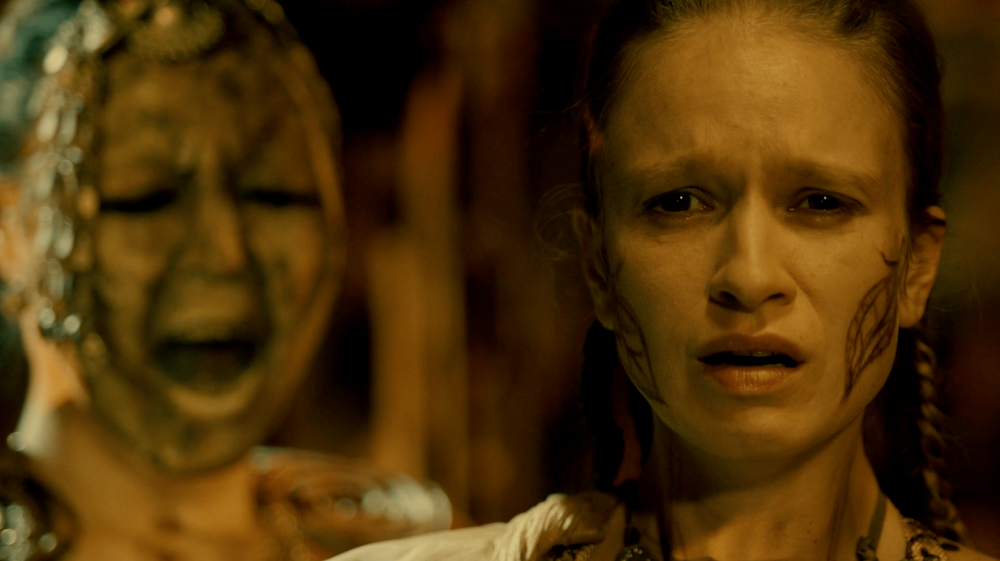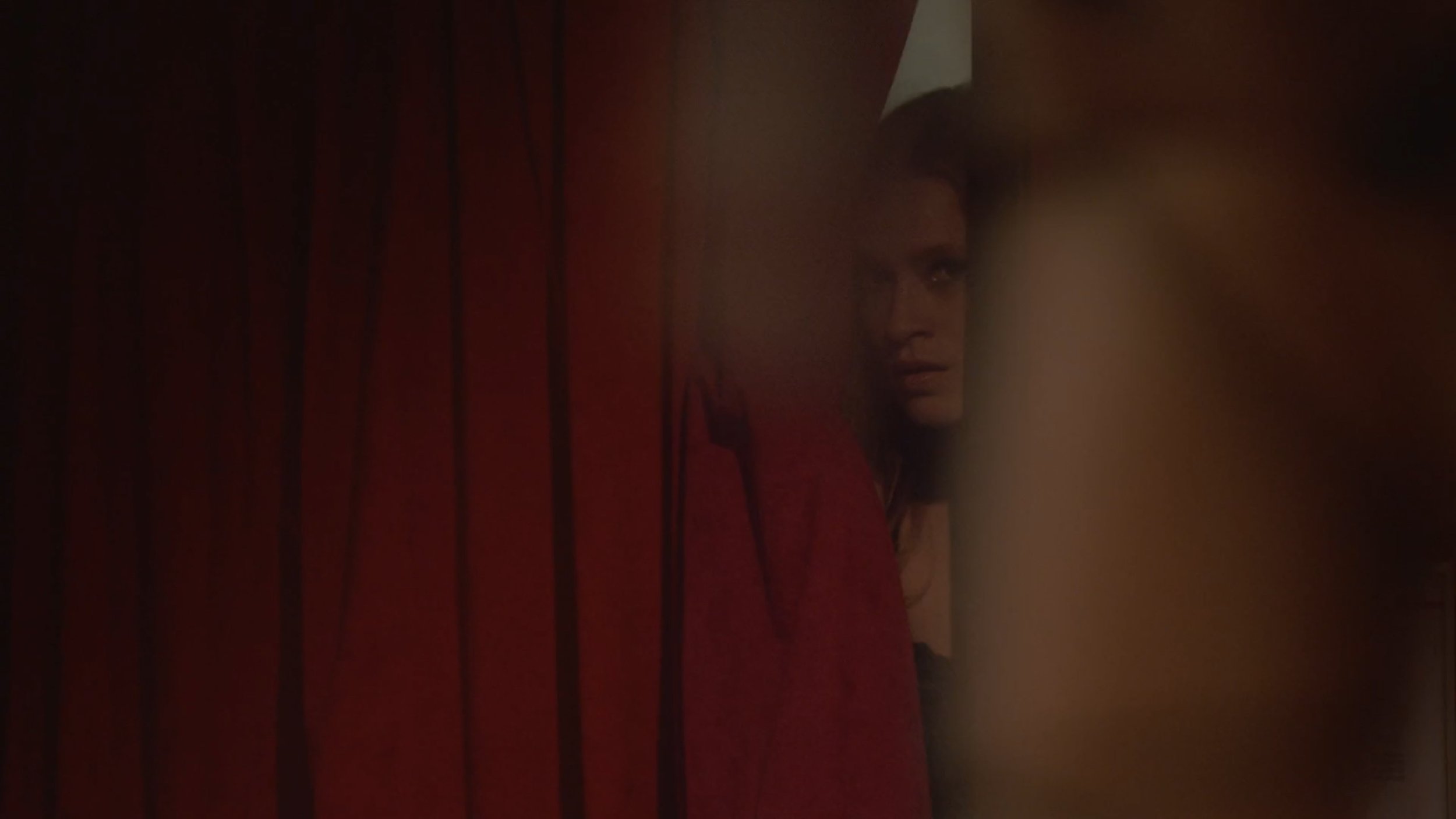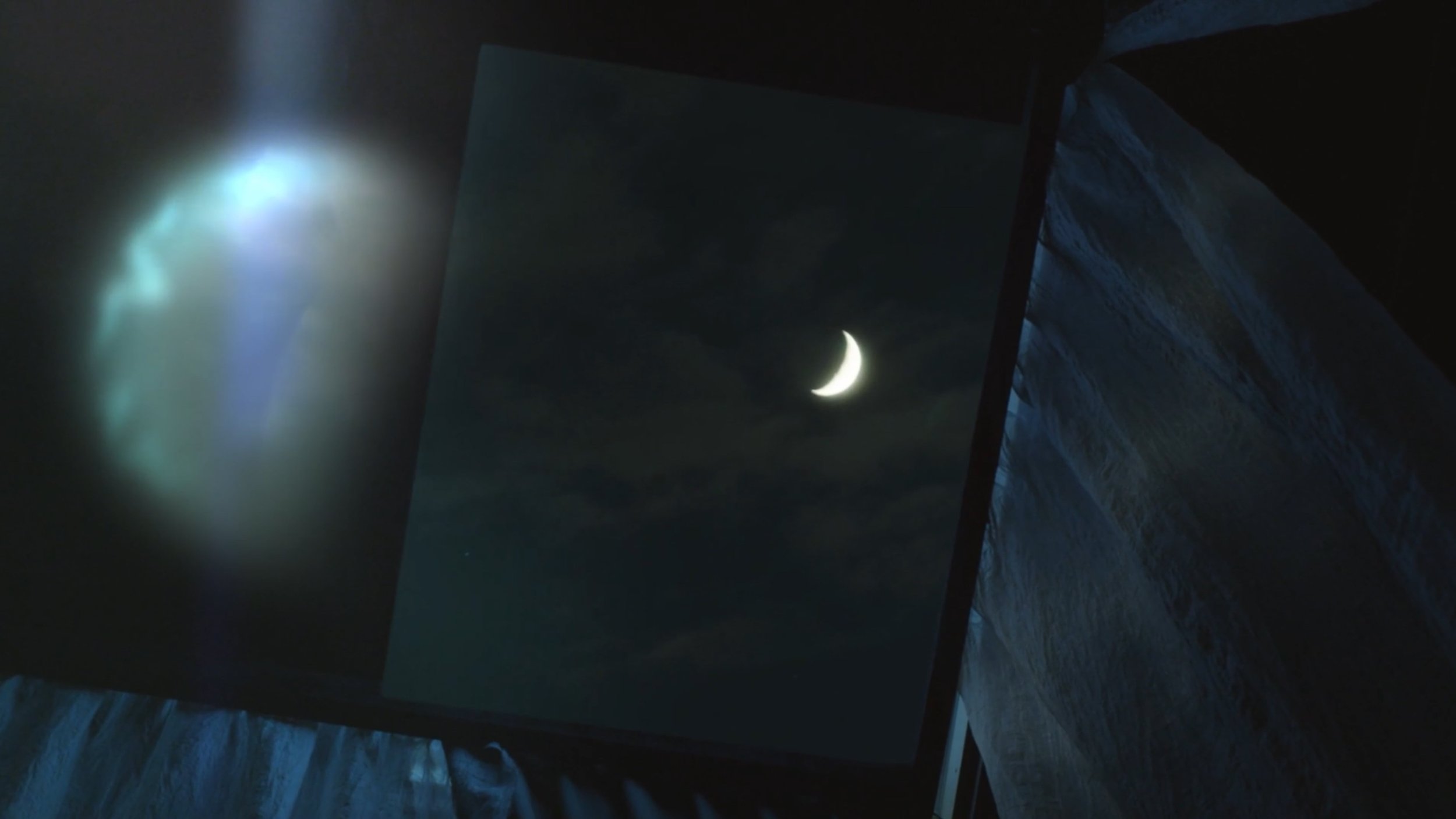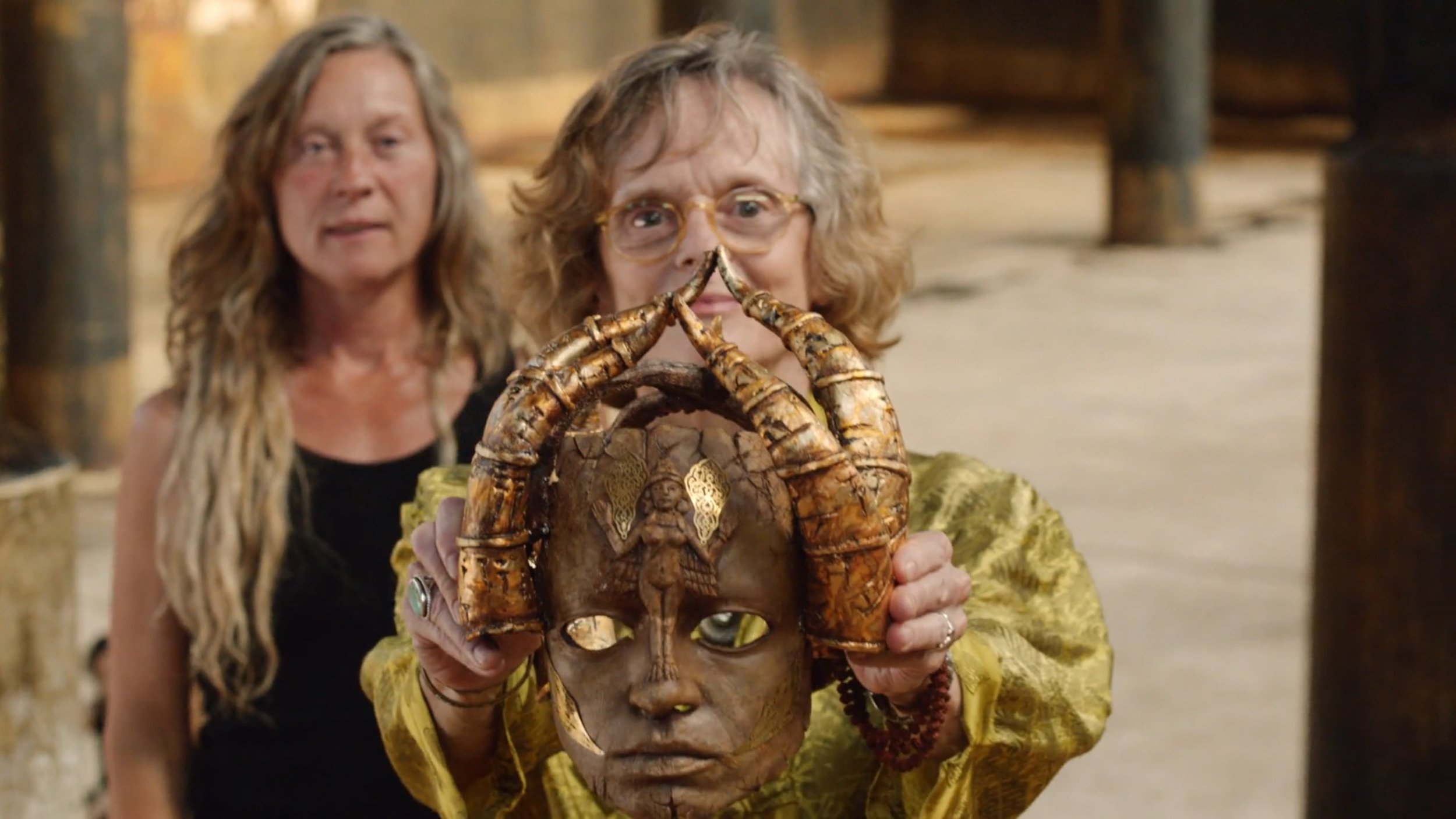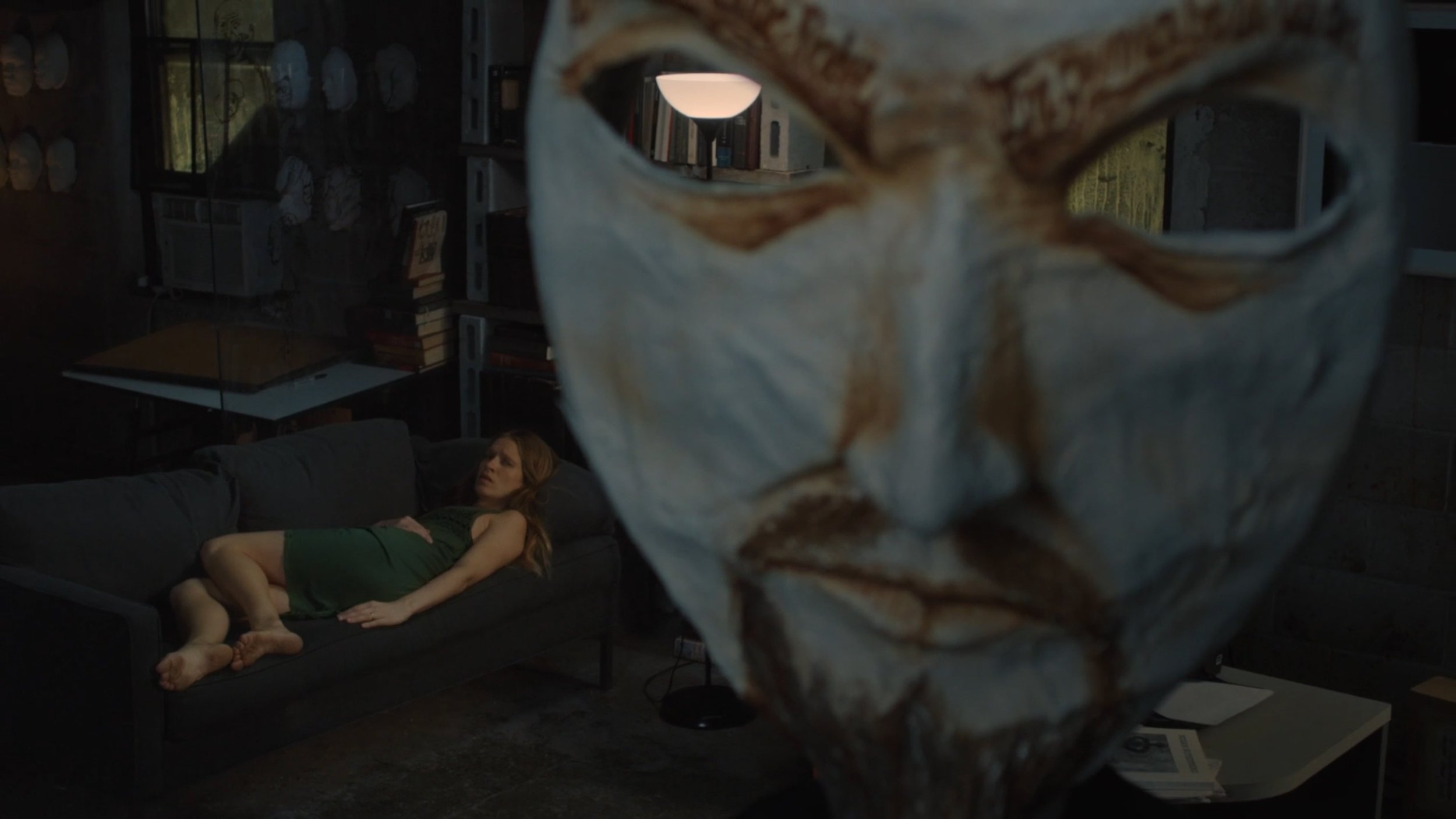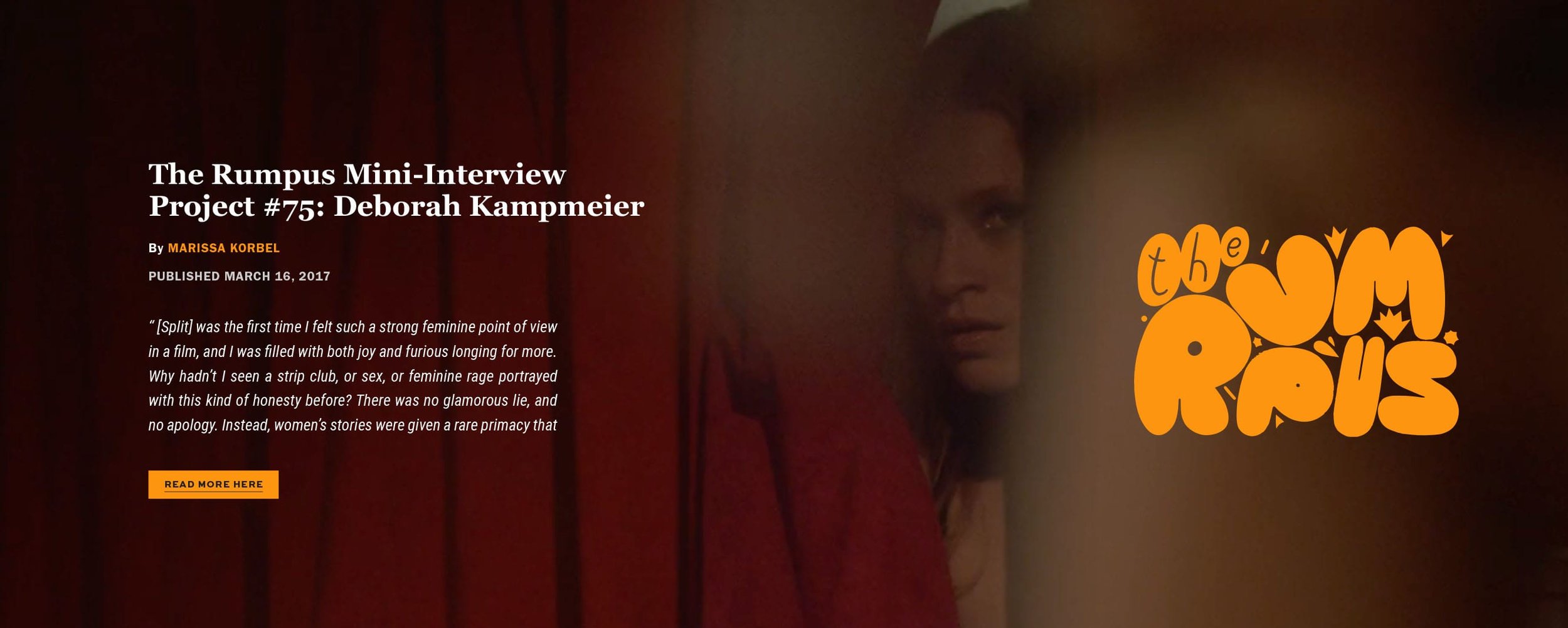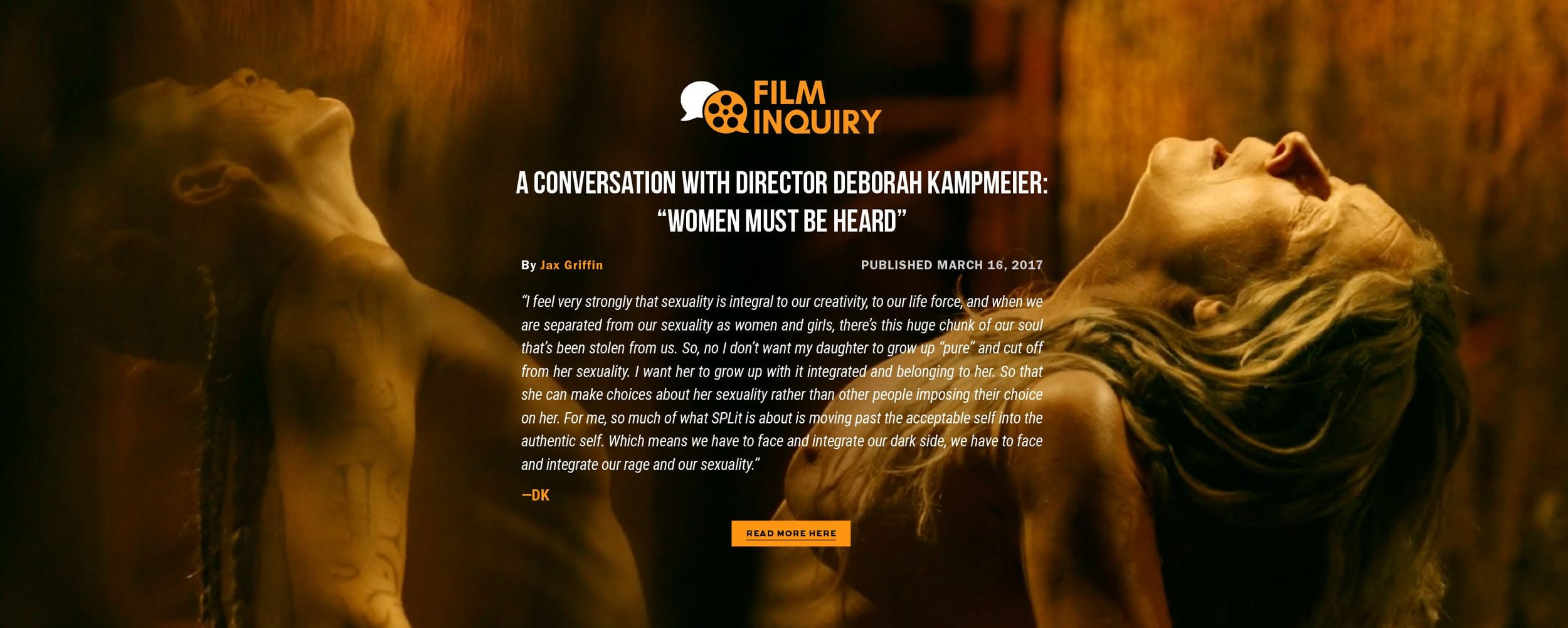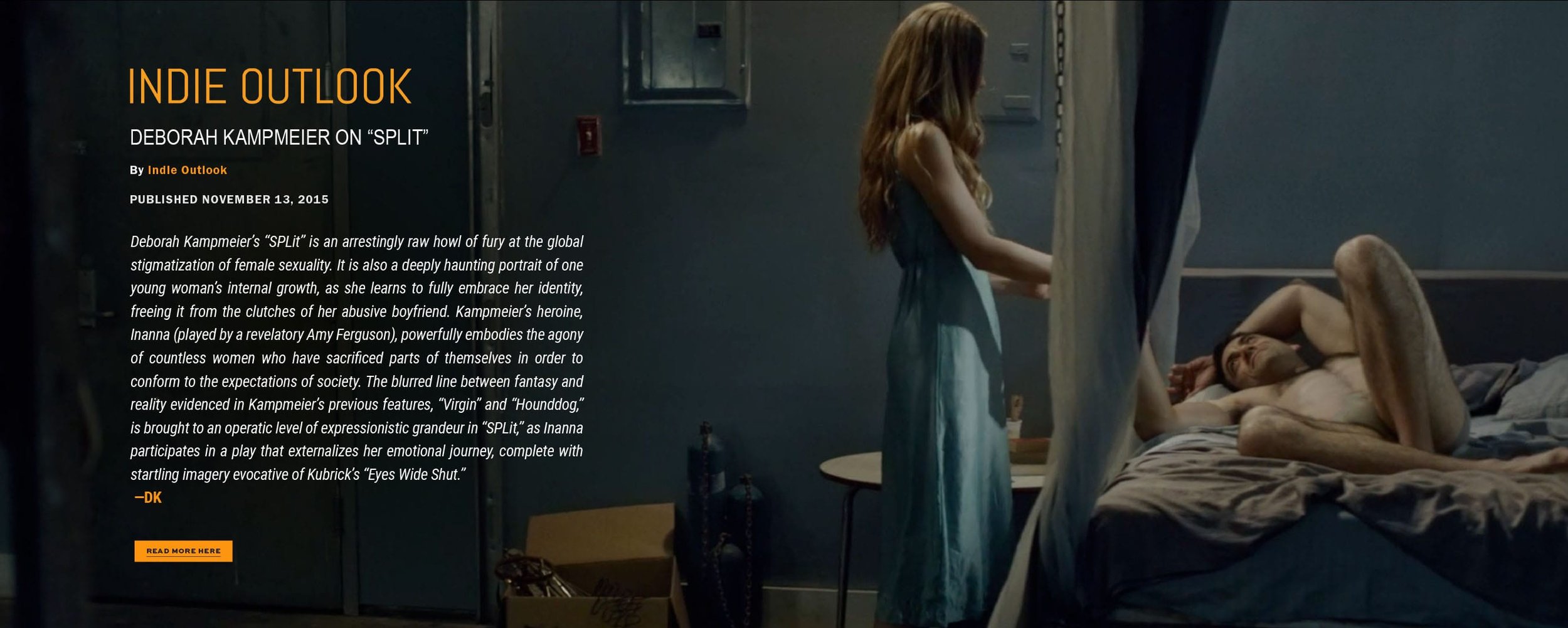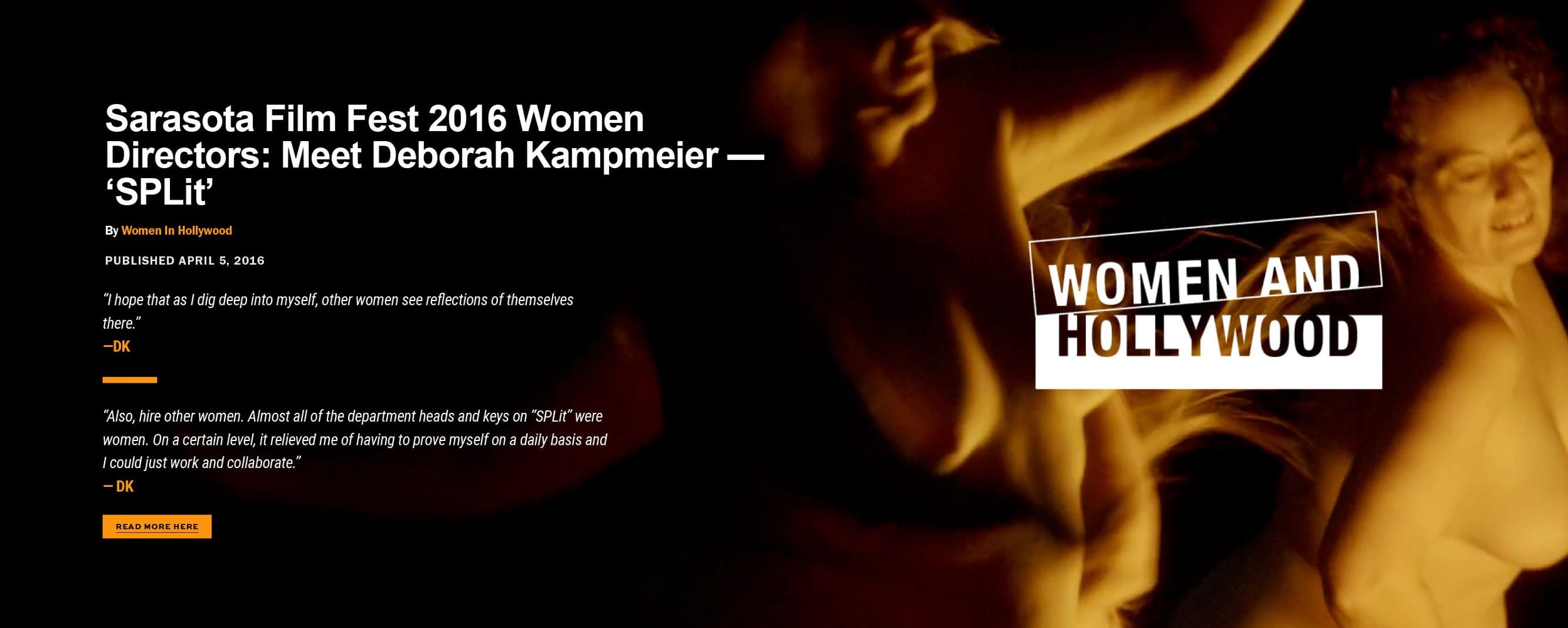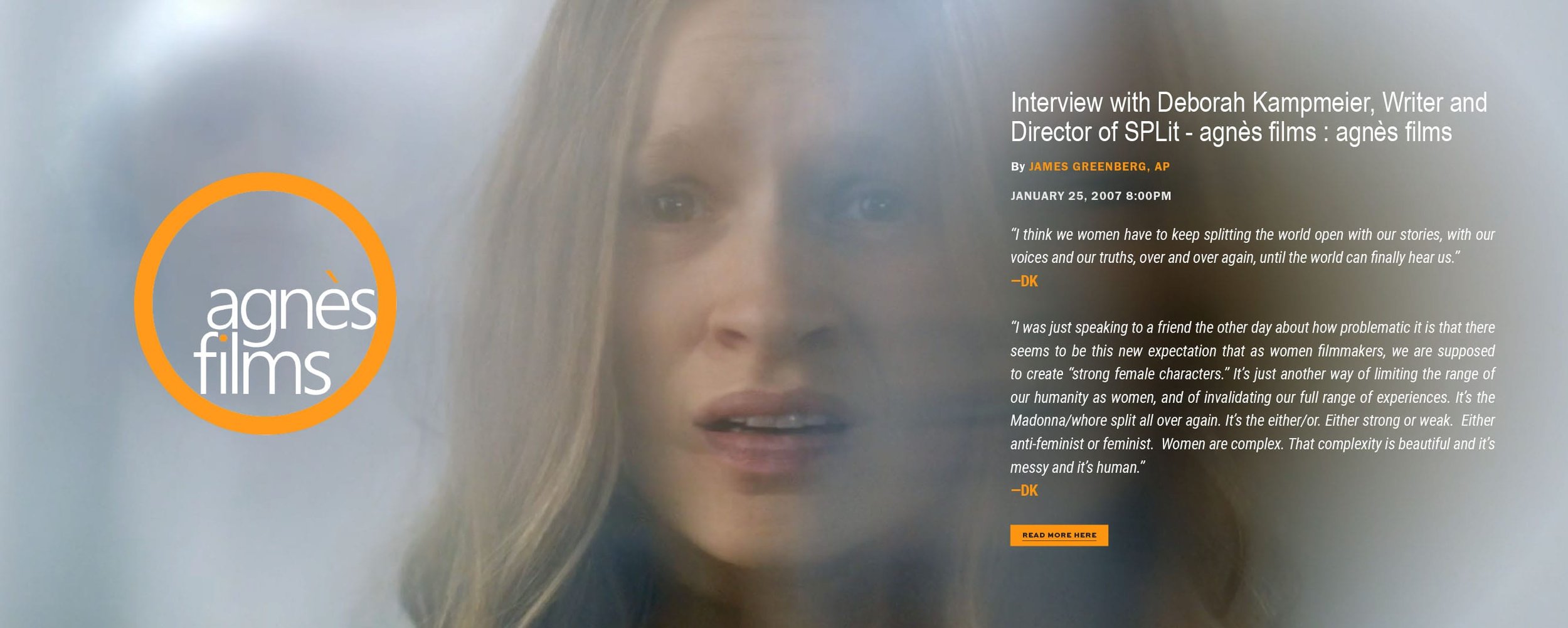Split 2016
Written and directed by Deborah Kampmeier,
SPLIT was nominated for the Independent Visions Award at the 2016 Sarasota Film Festival, and won the top jury prize, Best of the Show at the 2016 Female Eye Film Festival in Toronto. The film stars Amy Ferguson, Morgan Spector, and Anna Mouglalis.
Synopsis
When Inanna, a young actress, working as a stripper, becomes obsessed with a mask maker, she sacrifices parts of herself and her life, piece by piece, in order to win his love. At the same time she enters a mythic journey in the theater, one that blurs her performance, her dreams and her real life, resulting in a provocative and powerful confrontation that frees her.
Magical Realism
I have always been interested in exploring the relationship between inner reality and outer reality and the movement between the two. I explored this theme subtly in both Hounddog and Virgin. With SPLIT and the use of myth, theater, masks, and migraines I was able to push the edges of this exploration both visually and through the performances. So that the expression of magical realism in this film is quite bold but still has an organic relationship to the very raw and intense dysfunctional love story at the center of the film. My years of working with actors has given me the ability to create trust and hold the space for the actors to deliver deep and personal performances. I felt excited to bring to screen the very intimate experience of exploring the shamanistic phenomena of performance. The traveling between worlds and the healing effect of acting out our darkest secrets.
Theater
I grew up in the theater. Meaning when I was 16 I found the theater and that began the journey of finding myself. I feel the theater quite literally saved my life. I was able to express pain and rage with clarity and purpose for the first time. As I’m sure can be surmised from the themes in my first two films, I have had a very complicated relationship with my sexuality and have had to embark on a lot of healing to reclaim it. In my early twenties I was a stripper. I know a lot of women who have expressed an empowered relationship to sex work, and I respect that, but for me it had a direct relationship to abuse in my childhood. I was acting out and very disconnected from my authentic sexuality. And I found myself becoming obsessed with dysfunctional men and addicted to abusive relationships. My path to freeing myself was very connected to my creativelife, to the theater, to finding my authentic sexuality and to letting myself express my rage. This was all the fabric that I created SPLIT from.
The Myth
About 20 years ago I took a workshop with Olympia Dukakis and Joan MacIntosh (who plays the theater director in the film). They had created a workshop called “Voices of Earth” that was based on an ancient Sumerian myth called “The Decent of Inanna.” The myth tells the story of Inanna, the goddess of heaven and earth, who journeys down to save her sister Ereshkigal, queen of the underworld. Inanna’s journey, as she is stripped of her earthly possessions, at each of the seven gates on her way down to the underworld, experiences death, and returns to the world of the living, is ripe with metaphors for modern women. The workshop created a safe supportive environment where we could reclaim and celebrate aspects of the self that often go unrecognized in our patriarchal culture, usually the not so pretty aspects, like pain, grief, raw sexuality, desire and rage. In my interpretation of the myth, Ereshkigal, in addition to all the other aspects previously mentioned, is actually holding ALL the rage of EVERY woman. It’s huge rage. It’s every woman throughout history’s rage. All of this ancient rage that we as women have, living in our bodies, stored in our DNA. It is ancient rage, I really believe that. Rage that we have silenced in ourselves, to be nice, to not be inappropriate in our expression of our femininity. And she’s also holding all the rage of every woman who speaks their truth in the theater rehearsal in the film. She’s grieving for all those women. She serves as an archetypal figure in the psyche of Inanna calling her to face herself, to face her own rage and identify with all of the other women facing their rage. The workshop unearthed me and shook me to my core. The experience of the myth and the workshop became a guiding force in my life and informed every moment after. And became the core of my film.
Mirroring
When Inanna reaches the underworld her sister kills her. A creature is sent to the underworld to try and save Inanna. Part of what the creature is told is that you have to hear Ereshkigal’s pain and you have to feel her pain, and if you don’t really feel it and you don’t really hear it then Ereshkigal will kill you too. I think that’s really the message, we haveto hear these stories, we have to feel them. Or it’s going to kill us. We can’t just sit outside of these stories. Inanna can’t sit up on her high and mighty throne, detached. We as women have got to really hear each other. So we can hear ourselves. When Inanna goes to the underworld, she has to hear - she’s so resistant to hearing the rage and the grief and the pain - but ultimately she has to hear. The way that we free ourselves is to hear it. The way we free ourselves is to speak it, to express it, and to hear it. So when it’s finally heard, all of this pain, all of this grief, all of this rage, the release occurs where those feelings can soften, can move, can transform. It is this process of healing that the film is really about. Of healing the split. Of re-integrating, re-integrating, re-integrating ourselves, so we don’t get stuck.
“Mirror her” also came from the workshop. We were pushed to mirror the body and the sound of the woman in front of us. And, through mirroring, actually embodying the other woman’s experience, you can truly understand her. When you mirror that woman’s pain you can really feel it. But you must mirror it exactly, not impose your idea on it, not impose your story on it. If you are able to do that then you can really, truly hear. That’s what I experienced in this workshop. And that’s a powerful, life changing experience, to hear and to be heard.
The Gates
In the myth, as Inanna moves through each of the seven gates down to the underworld, a guard at the gate removes a garment that she is wearing. A piece of her identity. A piece of material that she uses to protect herself, that she uses to succeed at queen. At each gate she must release another piece, until she is stripped completely naked when she enters the underworld. At the first gate a crown is removed from her head. At the second gate a jewel from her forehead. Then a necklace at the third gate, and a breast plate at the fourth. I realized that each gate represented a chakra in a way. The first gate was like the 7th chakra. And so I incorporate work I’ve done on the chakras as well as we moved down through the gates in the film.
Split
Refers to many splits. The primary split is between Inanna’s performed, acted-out sexuality and her authentic sexuality. There’s the madonna/whore split between the good girl and the bad girl, the good sister and the bad sister, Inanna and Ereshkigal. There is the split between the conscious and the unconscious, the upper world (Inanna) and the underworld or underbelly (Ereshkigal) and the need to integrate these two parts of the self. There are Derek’s migraines that split his vision, and his bi-bolar illness that splits his personality. And there is the split of Inanna and Derek’s relationship at the end.
The Score
My friend, Leslie Graves, and I worked on the score together, and I always wanted her to compose the music. My other credited composer, Michelangelo Sosnowitz, did all the club music. Leslie and I collaborated on a few themes, Inanna’s theme, Derek’s theme, Ereshkigal’s theme and a couple other. We talked a lot about this idea of using sounds that are related to each of the chakras, which mirrored my vision for Inanna going through the seven gates. Unless you’re looking closely and know about chakras, you won’t really notice it. At the first gate she goes through, the crown comes off, exposing her head—then her throat, then her chest, then her solar plexus, all the way down. Leslie had done all of this research exploring the different chakra tones, and we started from there. We found the tune and the lyrics, and at first I was going to tweak them because they seemed a little too on the nose. But then I thought, “No, they’re perfect.” It was amazing what Leslie came up with
The Masks
I found a brilliant production designer, Eloise Kazan, who’s just a genius. She and I communicated for quite a bit of time and we exchanged beautiful research photos. There’s an image late in the script that we finally chose to create the masks from. We actually weren’t able to shoot the scene in the end because of our very low budget. But the image was of all of these women emerging out of the earth. The way it was written, you just see a muddy field and then these women are emerging up out of the earth. We drew from that image. We wanted the masks to feel very organic, very feminine, very much that earthy energy. She brought on an incredible mask maker, Mario Zarazua. We then had three actresses come into the studio and we made the molds for the masks from their faces. I wanted rage, grief, and pain. And so each actress took on one of those expressions. We did some theater movement exercises and found the face for each actress. And then they each held that face. For a long time! It was quite amazing when the plaster was put on their faces, they were deep in the emotion of each mask. And finally, when the masks were dried and taken off, they were weeping under that plaster. It was just incredible what these three women dove into in order to mold these masks. And these three masks were the base for every other mask created. It was fascinating how, as masks will do in theatre, they transformed with each actress who put them on. So even though they started as three individual masks, within particular emotional realms, they transformed into endless expressions in the chorus of women.
The Bodies of Women
Female sexuality is presented in our culture as a male fantasy. Female bodies are presented from the point of view of a male gaze. I wanted to show female sexuality from a female perspective, the pain and the power, the abuses and the pleasures, the experiences of the female body. The actress who plays Ereshkigal is an incredible, ferocious woman. What have women in their 50s had to do to break through the male fantasy and find their true, authentic
sexuality? This woman has done that and she is pushing Inanna to claim her own rage and sexuality. It’s not pretty. It’s volatile. What have women who have been abused or exploited or commercialized or shamed or repressed had to do to reclaim their sexuality? It’s not what the male fantasy shows us. It’s complex. The chorus of women in the film have done this and are pushing Inanna to claim her own sexuality and rage
The Imago
Derek is deeply sexy and charming to Inanna when she first encounters him. And he plays right into her neurosis, and she plays right into his. What often happens in those power dynamics is that one person holds all the grief, and the other holds all the rage. When Inanna finally does claim her own rage, there’s space then for Derek to feel his own grief. As women, we usually aren’t able to face our rage, so I think men often hold all of that and don’t face their grief. I’m thinking in heterosexual terms right now, and I know that this is a very particular male/female relationship that I’m addressing. We all have to face our own underbelly, which is what Inanna does in the film. It’s her story, so she’s the one that has the reckoning with it. But I hope in that moment of collapsing in the face of Inanna’s rage into his own grief, that Derek may be beginning to face his wound.
Migraines
Derek has migraines that come when he is trying to repress his feelings. They split his vision. Within the split vision he sees an image of himself as a boy, a wounded boy, trying to reach the adult self that has rejected the younger feeling self.
“I don’t want my daughter to grow up pure, I want her to grow up whole”
I think there is a deep need, as women, to be nurtured and supported to express our entire self, our whole self, not just the acceptable self. And I think that the acceptable self is what’s forced down our throats from day one, as women. I believe this idea of purity, which is very prevalent right now in certain parts of our society, is about control. It’s about controlling girls and women and it robs them of their whole self. We live in a paradigm that represses, exploits, commercializes, shames and abuses girls’ sexuality instead of nurturing and nourishing it. We keep our daughters naïve instead of educating them about their sexuality. And then they are set up for all sorts of experiences that diminish their power and their autonomy. I feel very strongly that sexuality is integral to our creativity, to our life force, and when we are separated from our sexuality as women and girls, there’s this huge chunk of our soul that’s been stolen from us. So, no I don’t want my daughter to grow up “pure” and cut off from her sexuality. I want her to grow up with it integrated and belonging to her. So that she can make choices about her sexuality rather than other people imposing their choice on her. For me, so much of what SPLIT is about is moving past the acceptable self into the authentic self. Which means we have to face and integrate our dark side, we have to face and integrate our rage and our sexuality.
https://www.amazon.com/gp/product/B06XSS3KJF/ref=atv_feed_catalog?tag=rottetomao_aiv_mv-20
